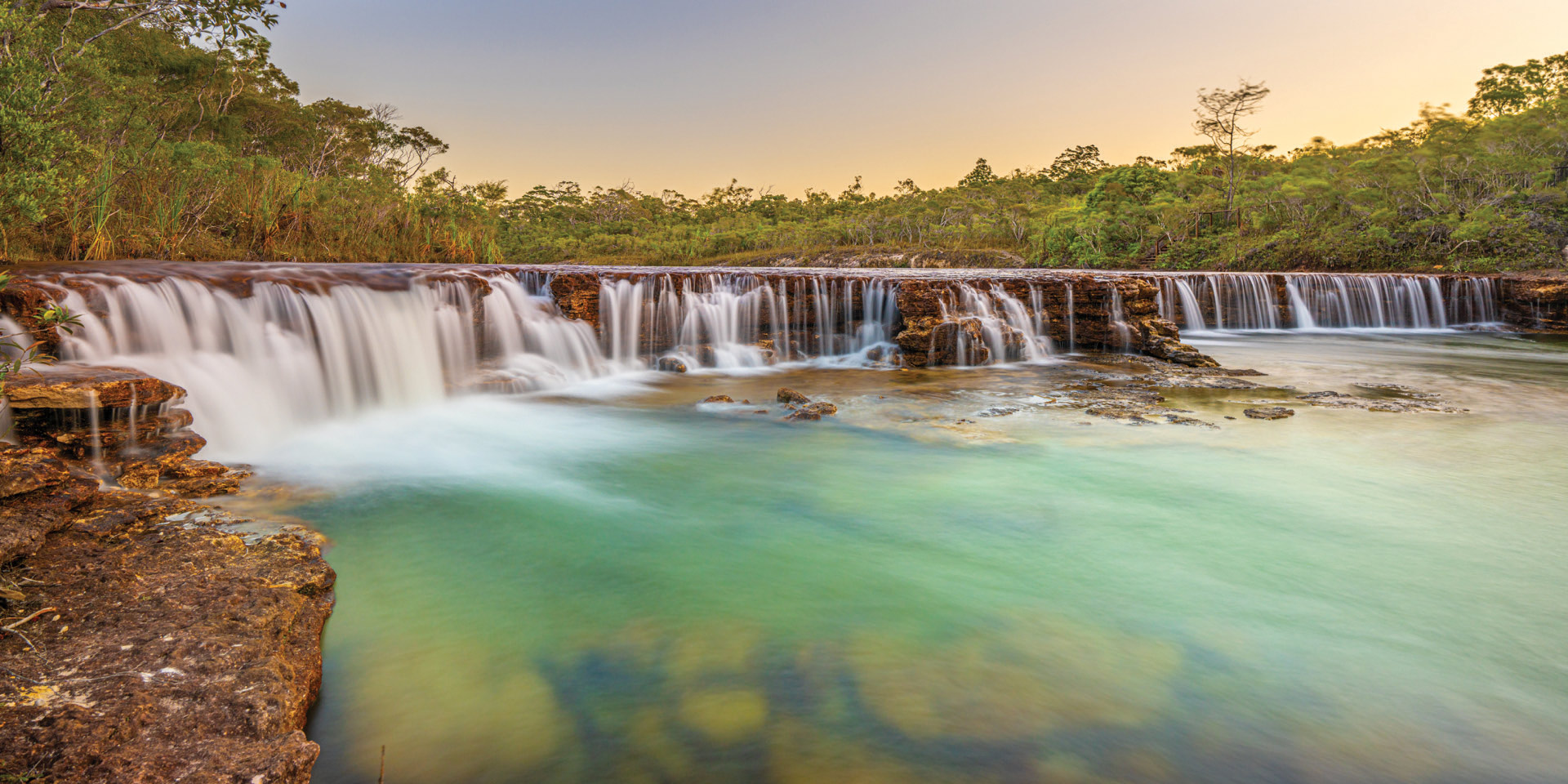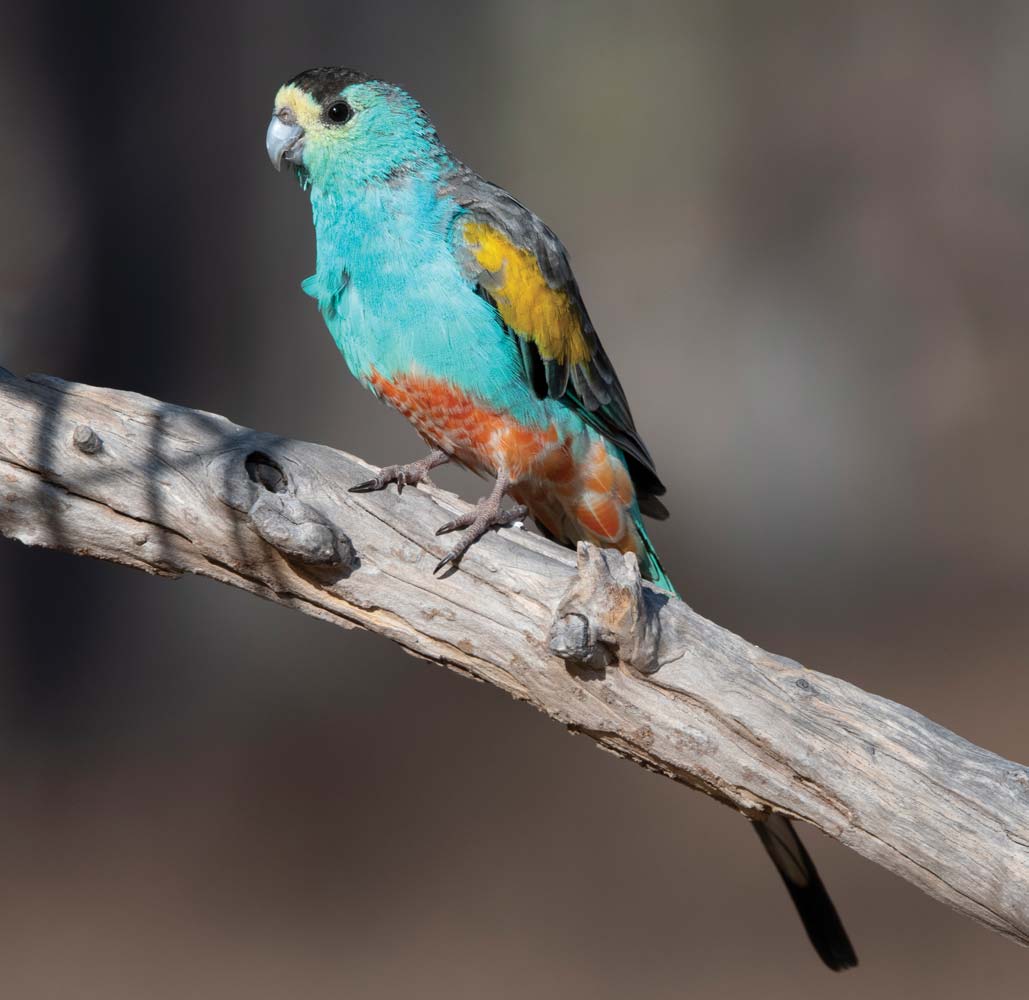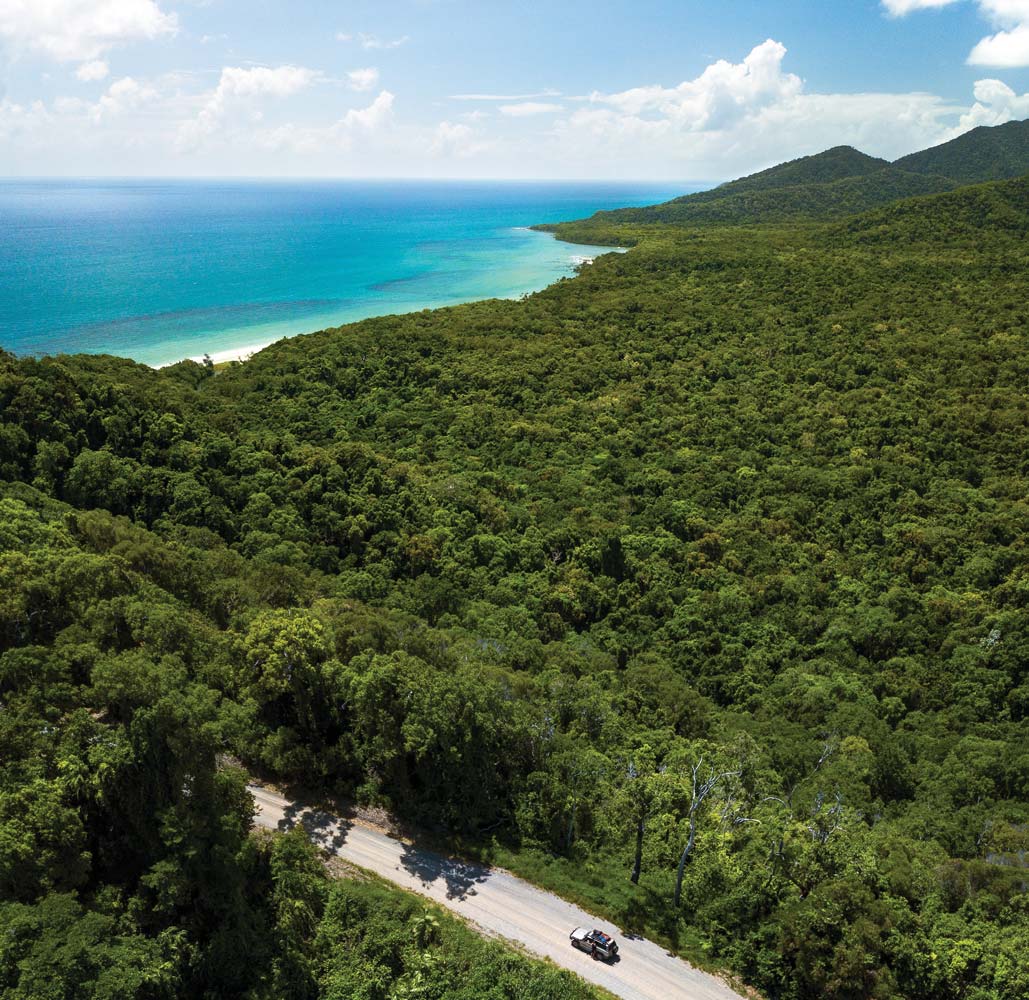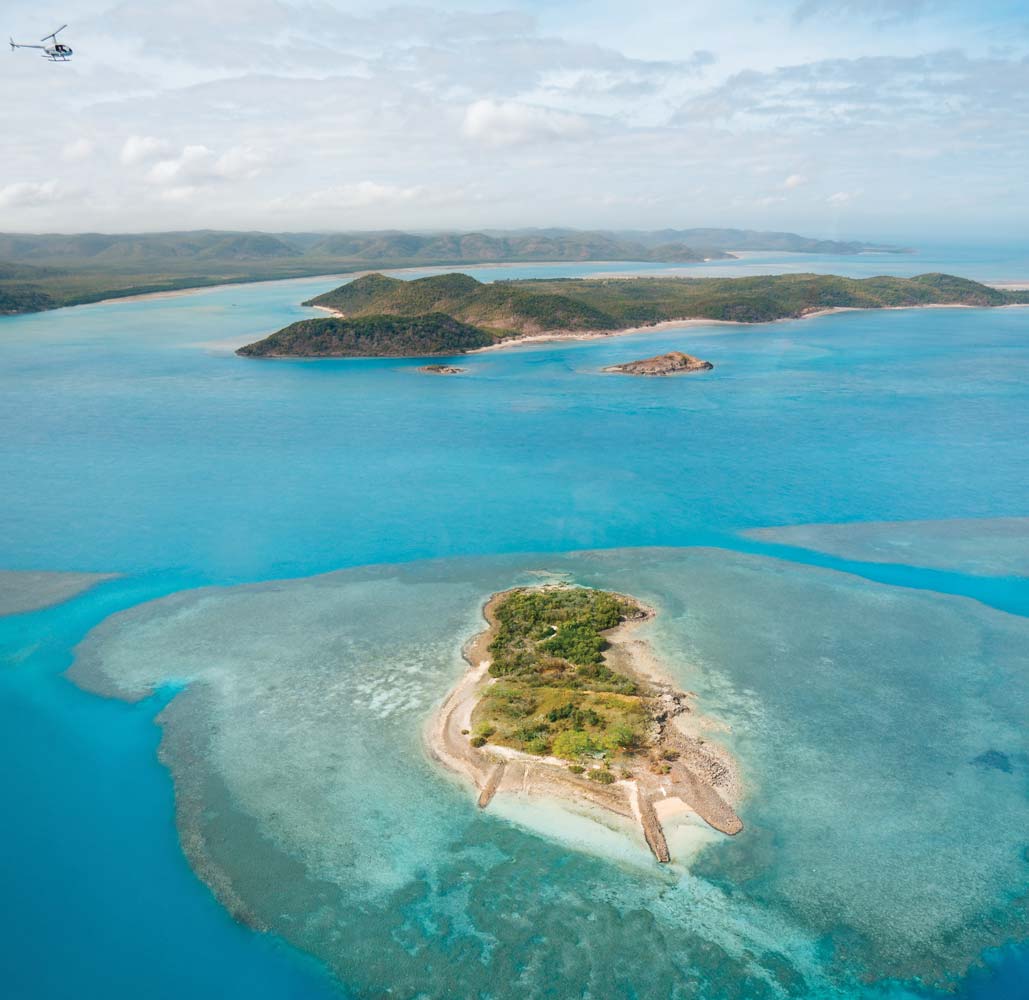You don’t need a reason to visit the northernmost tip of Australia. But if you’re looking for one – or 10 – make it these unparalleled attractions and activities.
WORDS Natasha Dragun
There’s a moment, as the sun peeks over the horizon, when it feels like someone has pressed ‘play’ on the wilderness world. There’s a flurry of bird wings and a cacophony of calls; dragonflies skim over the surface of water, butterflies dance in the day’s first rays, a northern quoll pads into the rainforest.
Cape York is a place where nature rules – and humbles. The colours seem more vivid here, the air cleaner, the shadows longer, and the wilderness, well, wilder. Hemmed by Torres Strait, the Gulf of Carpentaria and the Coral Sea, it’s a beguiling – and complex – union of untamed rivers and floodplains, grasslands and savannahs. At the northernmost tip of Australia, it feels like you’re standing on the precipice, waiting for tropical magic to happen. And it does, repeatedly.

- TAKE TO THE SKY
Traditional Owners, the Lama Lama and Kuku Thaypan peoples, have long known how special Rinyirru (Lakefield) National Park is. It’s as wide as it is wonderful, its expanse difficult to appreciate from ground level. Get some perspective on a scenic helicopter flight, swooping low over mangroves, billabongs, lagoons and lakes that carve the centre of the Laura Basin and drain into the Kennedy River and Princess Charlotte Bay. Sharing your airspace are golden-shouldered parrots, star finch and red goshawks, while in the water are crocs and speartooth sharks.
- ISLAND HOP
The Torres Strait archipelago comprises around 275 islands, including far-flung Thursday Island, a gem-like droplet blessed with water so blue you’ll think someone has taken the glasses off your nose and cleaned them for the first time. Schools of fish scuttle in the wake of your ferry to Friday Island, its surrounding lagoon resembling a precious opal. The nutrient-rich ocean is perfect for growing oysters, with pearls harvested at Kazu Takami farm since the 1860s. From seeding through to extraction, it can take two years to grow a single pearl, as you’ll discover touring the Kazu facility.
- STEP BACK IN TIME
A tiny settlement of 230 people on the Cape York Peninsula, Laura is a town in the most basic sense of the word: there’s a pub with a few rooms, and a roadhouse selling general supplies and fuel. That’s about it. But this unassuming destination is the gateway to something remarkable – one of the world’s largest collections of prehistoric rock art. Despite being exposed to the elements for more than 20,000 years, the paintings – turtles, barramundi and kangaroos; fertility symbols, spirits and hunters; a parade of ancestral guardians and mischief-makers – have been remarkably well preserved. It’s thought more than 10,000 art sites adorn the region’s 230,000 hectares of forest in the Laura Basin, collectively known as Quinkan Country. Visiting will give you goosebumps.
- NORTHERN EXPOSURE
“You are standing at the northernmost point of the Australian continent,” reads the sign at the tip of Cape York, known by Traditional Owners as Pajinka. The rocky headland is surrounded by water on all sides, the rippling turquoise expanse only broken by the pindan soil of York and Eborac islands, scalloped like enormous tortoise shells on the horizon. The area is wrapped in complex Indigenous and European history – nearby Somerset Beach is the site of the region’s first European settlement in 1864.
- A UNIQUE LODGE
In the centre of the Cape York wilderness, 480 kilometres north of Cairns and just nine kilometres from Lakefield National Park, lies a unique lodge named after the lotusbirds (or jacana) that call the area home. In fact, the immediate vicinity is home to over 200 species of birds – many of which enjoy use of Lotusbird Lodge’s onsite billabong and are known to visit the verandas attached to each of the 10 polestyle cabins. With a maximum of 20 guests on the property at any time, this is a special place that allows you to absorb the cape’s unique natural attractions while delivering outback hospitality in spades.



“Schools of fish scuttle in the wake of your ferry to Friday Island, its surrounding lagoon resembling a precious opal.”
- GO OFF-ROAD
Wild and rugged is the best way to describe the Telegraph Track, the original path for the Overland Telegraph Line. Back in the day, this was the only means of communication for those living in Cape York. And until 1986, this was the only route to the tip of Australia. Some sections are a challenge – thankfully there’s an alternative route – but it’s a thrill navigating the dips and surges and hair-raising creek-bed crossings. Only a hardy few take on the adventure; even fewer make it to Fruit Bat Falls, where you can cool off in gin-clear waterholes fed by the Eliot Creek.
- FOLLOW IN COOK’S FOOTSTEPS
Lieutenant James Cook named Cape Tribulation, then coastal Cooktown was named after him. Back in 1770, the explorer’s ship, Endeavour, was crippled on a section of the Great Barrier Reef. He ventured ashore and met the Indigenous community, spending 48 days chronicling Aboriginal words and learning about native flora and fauna while repairs were completed on his vessel. Today, wide streets are lined with stately buildings – built on the back of a gold mining boom a century after Cook departed – plus monuments and museums dedicated to the explorer. The town doesn’t let you forget its European history, but also celebrates its long Indigenous heritage at every turn.
- ENJOY A QUIET COLD ONE
The Queensland outback is blessed with quirky, character-filled pubs. The Lions Den Hotel, circa 1875, may well be the most offbeat of them all. The timber and iron shack comes minus phone reception and WiFi. But proprietors proudly tell you that instead they offer “Cold drinks, belly-filling meals and lifelong memories.” Many of these are immortalised on the pub’s walls – visitors are encouraged to scrawl a message wherever a sliver of space is available. The setting amid 100-year-old mango trees is just as eye-opening as the conversations you’ll have with locals.
- GET YOUR MOTOR RUNNING
The Bloomfield Track is not for the faint of heart. Steep, unpaved roads climb escarpments, with ancient rainforest on one side and the twinkling coast on the other. Even in the dry season, your 4WD route is cut by the flow of creeks and rivers – any crossing is an adrenaline-pumping experience. The 100-kilometre track ends in Cooktown, with detours to attractions like Wujal Wujal Falls (Bloomfield Falls). Hold onto your hat, this is one wild ride.
- NATURAL SELECTION
If you’ve ever wanted to feel insignificant – in the best possible way – Piccaninny Plains is the place to visit. Over the wildlife sanctuary’s 170,000 hectares of woodlands, wetlands and mosaic rainforest you’ll find more than 400 mammals, birds, reptiles and amphibians, not to mention a staggering 900 plants. The diversity nods to the fact that Cape York was connected to New Guinea for much of the last 250,000 years, and the land management team at Australian Wildlife Conservancy is working tirelessly to ensure this rich biological legacy of flora and fauna is preserved for future generations.
Journey to the tip of the continent on our 13-day Cape York Wilderness Adventure and experience moments of magic, such as a scenic flight over Rinyirru (Lakefield) National Park and swimming at Fruit Bat Falls.
Explore more stories like this one in our Beyond Magazine. Download or request your copy today at www.journeybeyond.com/inspiration/journey-beyond-magazines/